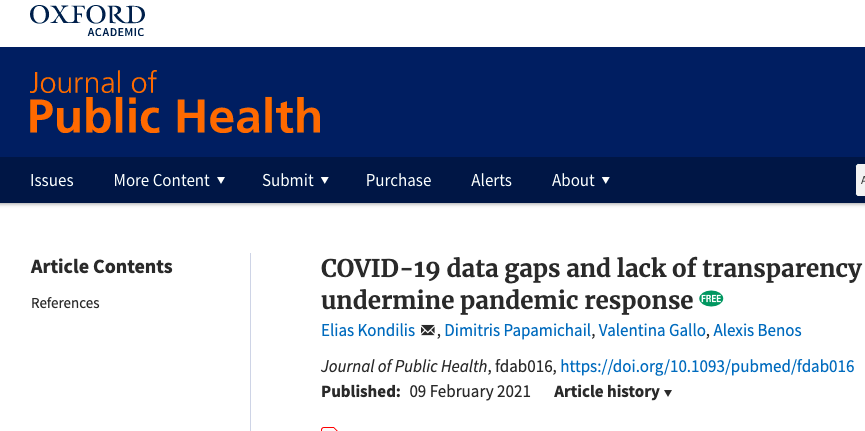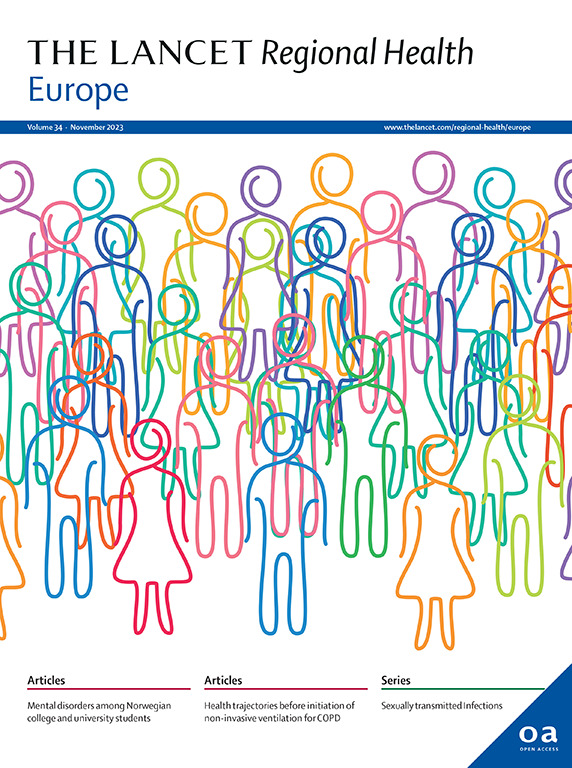COVID-19 data gaps and lack of transparency undermine pandemic response

Elias Kondilis1 , Dimitris Papamichail2 , Valentina Gallo3 , Alexis Benos1
1. School of Medicine, Aristotle University of Thessaloniki, 54124 Thessaloniki Greece
2. Department of Public Health Policy, University of West Attica, 11521 Athens Greece
3. Campus Fryslân, University of Groningen, Leeuwarden, The Netherlands
Address correspondence to Elias Kondilis, E-mail: This email address is being protected from spambots. You need JavaScript enabled to view it..
Ronquillo et al. correctly argue that collecting and synthesizing data and information quickly is crucial for managing any public health emergency.1 Timely, complete and accessible surveillance data are necessary for monitoring the progression of an epidemic and designing targeted and effective containment measures. Transparency and data accessibility are also perquisites for building trust, increasing public compliance to public health measures and allowing fairness and accountability in decision-making.2
Building on the management experience of previous epidemic crises, the World Health Organisation (WHO) and the European Centre for Disease Prevention and Control (ECDC) relatively early in the COVID-19 pandemic, set minimum standards and recommendations for member states regarding routine surveillance data collection and reporting (Table 1, columns 1 and 2).
WHO guidelines require member states to collect and report aggregated data on COVID-19 confirmed cases and deaths (both stratified by age group and sex); number of tests and hospitalized cases and discharges.3 On top of WHO data, ECDC asks European member states to collect and report data on the geographical spread of the pandemic; data related to COVID-19 healthcare impact (e.g. confirmed cases among healthcare workers, availability of ICU beds); outbreak surveillance data and contact tracing data.4 Academics have argued that the previous minimum data sets need to be further stratified (e.g. reporting cases and deaths by occupation, nationality, race, postal code) in order to uncover inequalities and achieve operational effectiveness in the control of the epidemic at the local level.
Greece recently faced a severe second COVID-19 wave. Despite having enough time to prepare due to the few cases until June, and ignoring early calls for urgent investment on epidemiological surveillance and transparency,5 the system is still failing to collect adequate data and even report minimum indicators (Table 1, column 3). Aggregated data on COVID-19 hospitalized cases and discharges are neither publicly accessible nor reported to ECDC or WHO, data on COVID-19 confirmed cases or deaths among healthcare workers are not collected. Outbreaks in nursing homes or workplaces are reported only by the media and contact tracing data are not publicly available. COVID-19 cases and deaths are not stratified by ethnic background, occupation or socioeconomic status.
These serious data gaps are not unique in Europe6 and are mostly related to the lack of prioritization and under-investment in local public health surveillance systems.5 Given the time needed in order to achieve herd immunity through vaccination, immediate investment in comprehensive epidemiological surveillance is the only way to maintain reduced levels of transmission and avoid resurgences.
download the full paper in PDF




